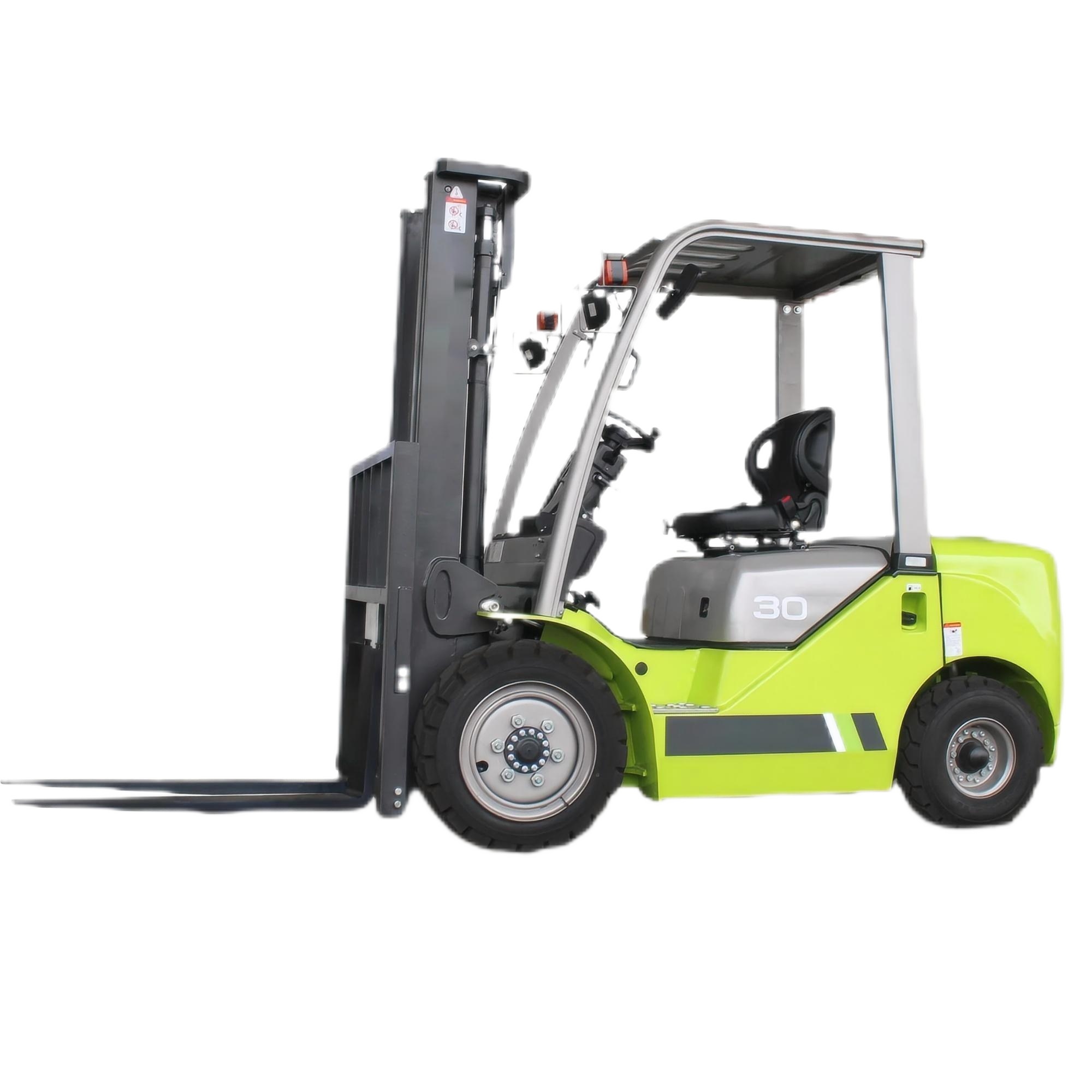The differences between a 1-ton electric forklift and a 2-ton electric forklift are mainly reflected in aspects such as load capacity, structural design, applicable scenarios, and price. The details are as follows:

I. Differences in Load Capacity and Own Weight
Load Range
- 1-ton Electric Forklift: The maximum load capacity is 1 ton, suitable for handling lightweight materials, such as pallets and small packaged goods.
- 2-ton Electric Forklift: The load capacity is increased to 2 tons, capable of handling heavier goods (such as medium-sized boxed materials), suitable for medium-intensity operations.
Own Weight and Stability
The own weight of an electric forklift is approximately 1.5 - 2 times the load capacity. For example, the own weight of a 1-ton forklift is about 1.5 - 2 tons, while that of a 2-ton forklift is about 3 - 4 tons.
Due to its larger own weight, the 2-ton forklift has higher stability and is suitable for outdoor use or scenarios requiring frequent turning; the 1-ton forklift is more lightweight and flexible, suitable for operations in narrow aisles.
II. Structural Design and Functional Features
Type Differences
- 1-ton Forklift: Mostly front-moving or electric pallet trucks, with a compact body (the turning radius can be as small as 1.8 meters), and without a mast lifting system, suitable for short-distance handling indoors.
- 2-ton Forklift: Commonly seen in counterbalance or stacker trucks, equipped with a mast structure, and the lifting height can reach more than 6 meters, suitable for high-position picking in warehousing and logistics or medium-distance transportation.
Battery and Power Consumption
Both mainly use lithium batteries, but due to the higher power requirements, the 2-ton forklift has a larger battery capacity (for example, fast charging can replenish 80% of the power in 30 minutes), and the driving time is slightly shorter than that of the 1-ton model.
III. Comparison of Applicable Scenarios
| Scenario | Applicability of 1-ton Forklift | Applicability of 2-ton Forklift |
|---|---|---|
| Indoor Warehousing | ✅ Narrow aisles, low shelving (such as convenience stores, supermarkets) | ❌ Insufficient load capacity, needs to be paired with larger-tonnage equipment |
| Outdoor Operations | ❌ Light own weight, poor stability | ✅ Short-distance transportation, dock loading and unloading, light outdoor scenarios |
| High-position Picking | ❌ Limited lifting height (usually ≤ 2 meters) | ✅ Supports high-position operations above 6 meters, suitable for three-dimensional warehouses |
| Complex Terrain | ✅ Lightweight and flexible, can pass through low spaces | ❌ Large turning radius, easily restricted by terrain |
IV. Price and Configuration Differences
Basic Price
- Price range of 1-ton forklift: 27,000 - 37,500 yuan.
- Price range of 2-ton forklift: 29,800 - 100,000 yuan (the higher the configuration and the more expensive the brand).
Configuration Upgrades
The 2-ton forklift is more likely to be equipped with an intelligent BMS battery management system, solid tires, or a high-position operating platform, while the 1-ton model is mainly equipped with basic functions.
Summary
When making a selection, it is necessary to consider the operation intensity, space limitations, and budget:
- 1-ton Forklift: Suitable for indoor light-load and flexible handling scenarios, with high cost performance.
- 2-ton Forklift: Applicable to scenarios requiring a medium load while balancing flexibility and stability, but the cost increases significantly.





